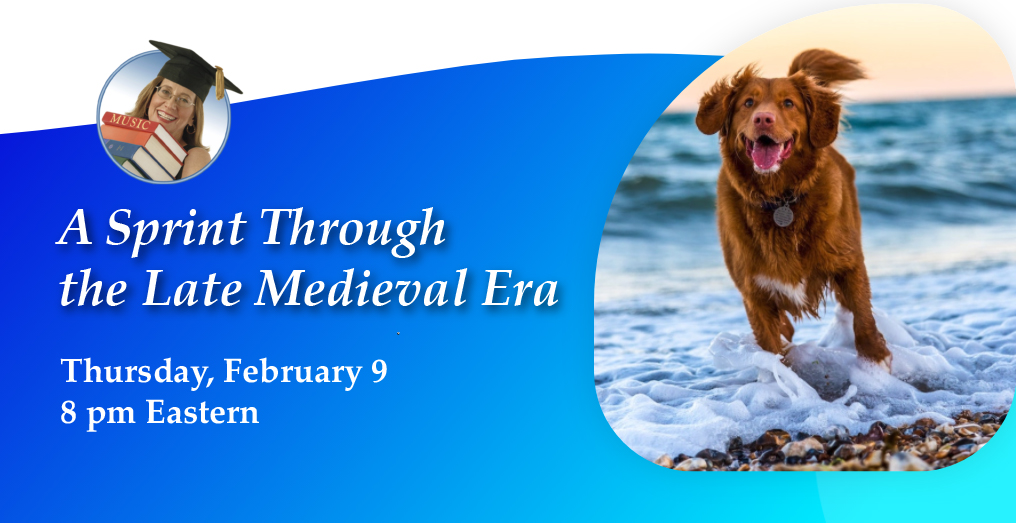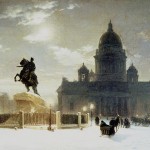
What is the purpose of our “Sprints Through History” series?
It’s about making connections. The sessions are not intended to simplify or to skip over parts of history. Instead, we want to bring together and present many historical forces that affect each topic: the arts, literature, politics, economics, conflicts, and whatever else helps us understand why things happened as they did.
Circle of Scholars Members can view the Sprint Series at this page.
NEXT WEBINAR
A Sprint Through the Late Medieval Era
This webinar will be rescheduled.

Past Events
A Sprint Through the Late Romantic Era
The late Romantic Era includes some of the most beloved works in the “classical music” arena from composers like Tchaikovsky, Brahms, Liszt, and yes, Wagner, just to name a few. The era produced works of lush orchestration and amazing virtuosity along with contrasting pieces of simple elegance and poignancy.
In this “Sprint,” Professor Carol takes you on a whirlwind tour of the important movements in art and history that controlled this era. We will look at the political, social, and economic factors that prevailed with the aim of getting a big-picture overview.
A Sprint Through the Early Romantic Era
The Romantic Era covers a lot of territory and a very rich repertoire. Too big, maybe, for a single “sprint.”
So we are going to focus on the first part: What kicked off the Romantic era and why did it become such a huge movement in art, music, and literature?
A Sprint Through 18th-Century Classicism and the Enlightenment
It was known as the Age of Reason and it produced some of the most remarkable achievements in the arts and politics. Its guiding lights included Diderot and the Encyclopedists, John Locke, Adam Smith, and Thomas Jefferson. It would give birth to the American Revolution. Symmetry and balance characterized classical architecture and the music of Haydn and Mozart.
A Sprint Through the Baroque Era
From Monteverdi to Bach, Professor Carol covers 150 years in one hour. The Baroque Era (roughly 1600 to 1750) includes some of the most sophisticated and most popular music ever written.
We will look at the world that these artists knew, the fashions and philosophies of the time, and the things that make it possible for us to carve out this era and give it a name.
Webinar registrants should check their email for the password.
A Sprint Through Russian History

Isn’t Russian history hard?
Not actually. Across more than a thousand years, just two dynasties ruled the vast Slavic kingdom: the Riuriks (think “Ivan the Terrible”) and the Romanovs (including Peter the Great, Catherine the Great, and a succession of Alexander’s and Nicholas’s until the revolutions of 1917 and tsardom’s bloody end). During that same 1000 years, Eastern Christianity (Orthodoxy) was adopted as the official religion by tenth-century Kievan princes and served to shape every aspect of culture. It even exerted influence in absentia during the seventy years when Soviet Communism set about crushing Russia’s traditional values.
Throughout the entire period, magnificent artists told the story using music, poetry, art, drama, and dance, portraying both the light and dark aspects of Russia’s cultural history! Their works, stunning in and of themselves, speak more vividly when placed within their historical context.
